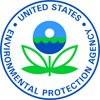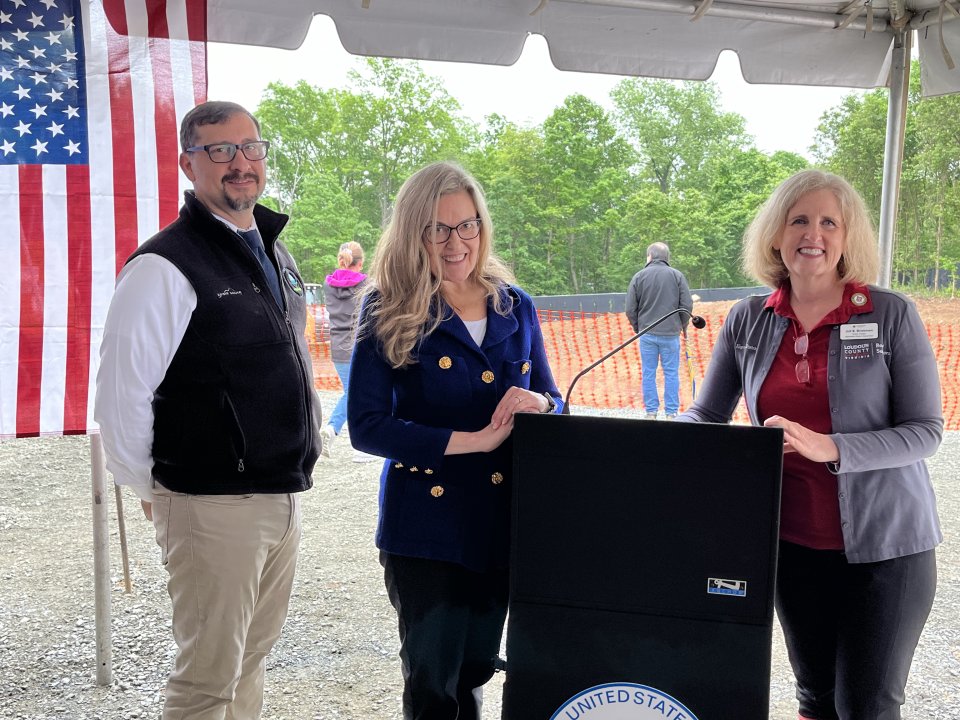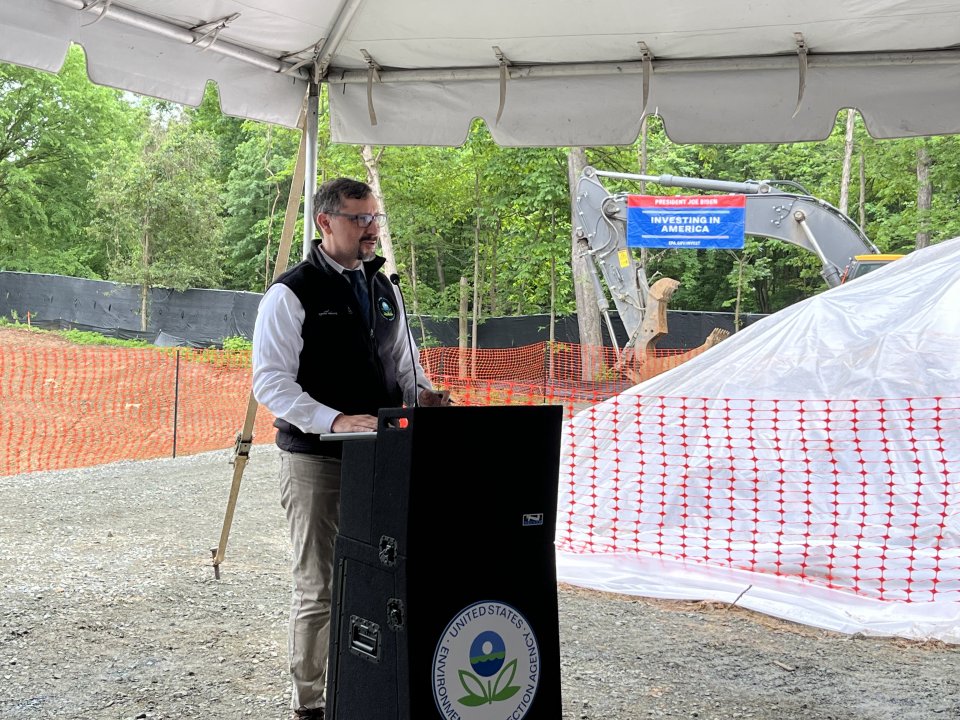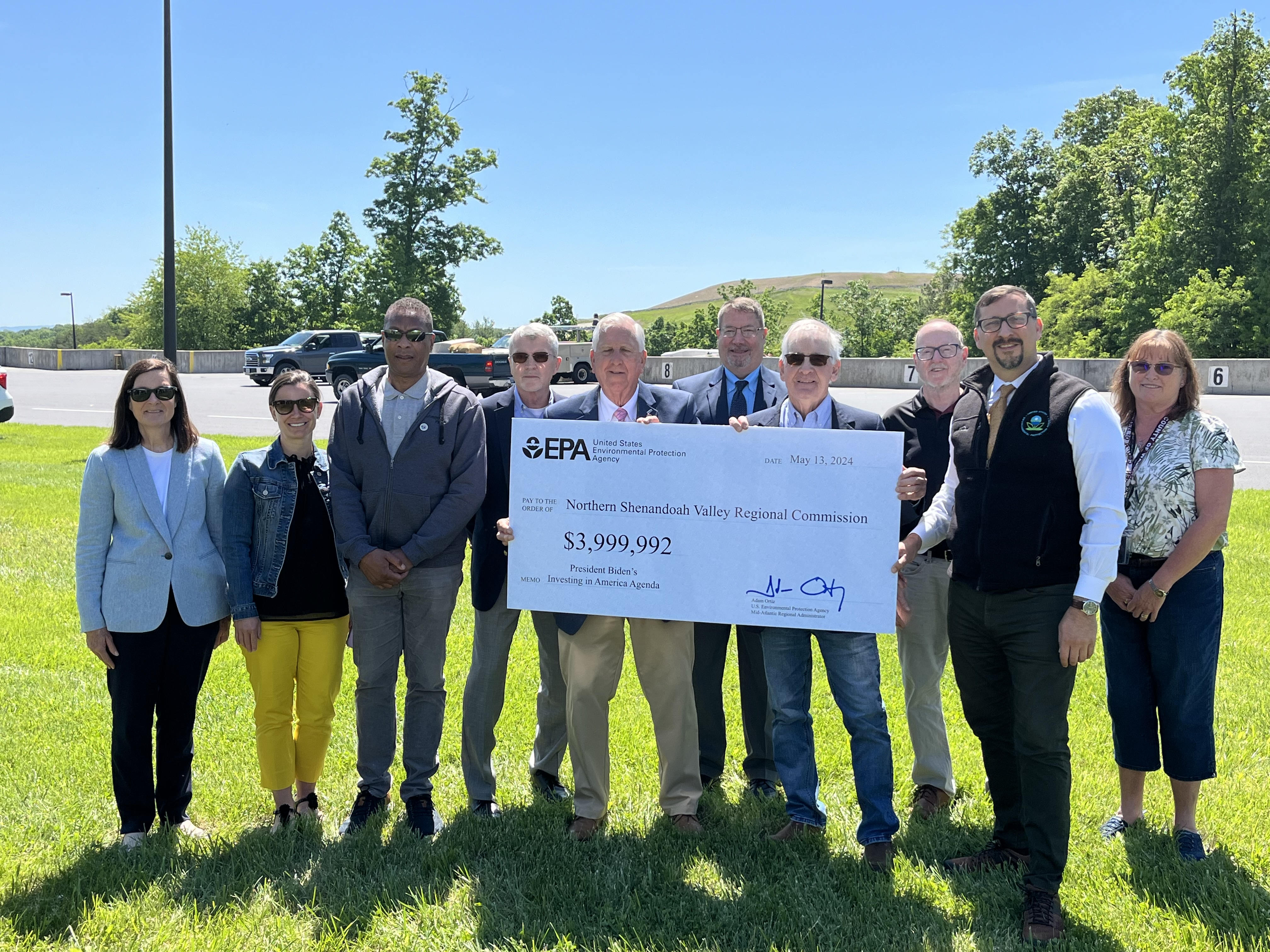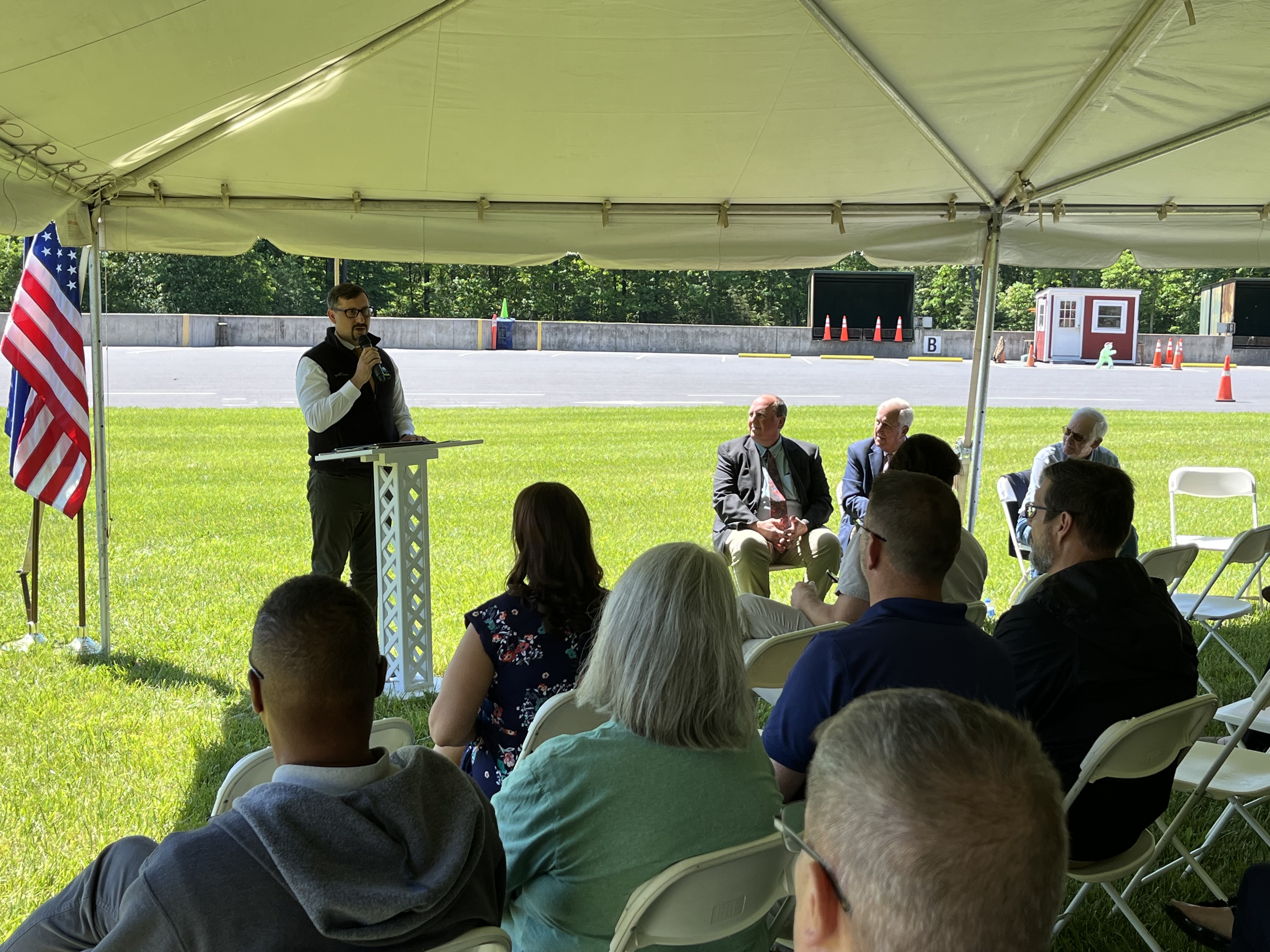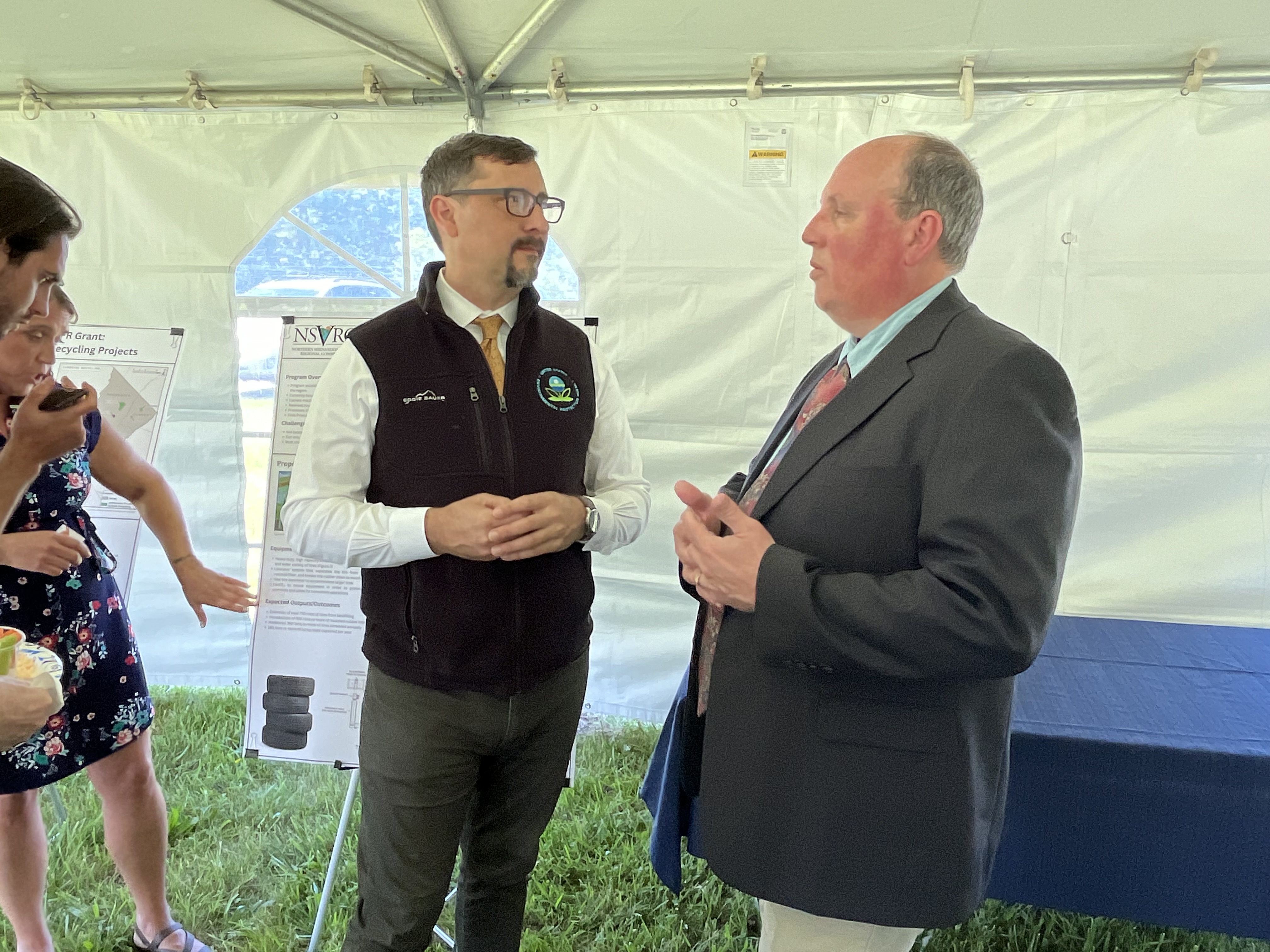Hicksville, N.Y. (May 13, 2024) – Today, the U.S. Environmental Protection Agency and the State of New York broke ground on a pivotal drinking water infrastructure project in Hicksville, N.Y. System operators will install a system to safeguard the community’s drinking water from PFAS chemicals, also known as ‘forever chemicals.’ The project received water infrastructure investments under the Bipartisan Infrastructure Law and the New York State Water Infrastructure Improvement grant program.
“No matter where people live, they should feel confident about the water coming out of the faucet,” said EPA Regional Administrator Lisa F. Garcia. “This new system—along with other improvements under way and planned for this project—will give that assurance to the people of Hicksville.”
EPA Regional Administrator Lisa F. Garcia joined U.S. Representative Tom Suozzi, New York State Department of Health Executive Deputy Commissioner Johanne Morne and New York State Environmental Facilities Corporation Director of Program Management Máire Cunningham in front of Hicksville Water District’s Plant 6 where construction is already underway. Nassau County Legislator Rose Marie Walker, Town of Oyster Bay Supervisor Joseph Saladino and Hicksville Water District Chairman Karl Schweitzer also joined the celebration.
This portion of the efforts to improve the Hicksville system is funded by a $2 million Bipartisan Infrastructure Law Emerging Contaminants grant through the New York Drinking Water State Revolving Fund program and a $3 million New York State Water Infrastructure Improvement grant. The new treatment system is designed to meet the EPA’s new final PFAS standards. In addition to the $5 million in grants for the project breaking ground today, New York State has awarded the Hicksville Water District $31 million in New York State grants to date to install treatment systems that remove emerging contaminants at their water supply well sites.
“Our Bipartisan Infrastructure Law is supercharging the effort to clean-up our drinking water even while it creates good-paying jobs and boosts the Long Island economy. I’m proud that the EPA is putting $2 million in Infrastructure Law funding forward to help Hicksville Water District and New York build a water treatment system to more effectively screen out dangerous 1,4 Dioxane, PFOS, PFOA and other toxins from residents’ drinking water. This is just the beginning, and I will continue to advocate for more funding and safety improvements across Long Island,” said U.S. Senate Majority Leader Chuck Schumer.
“All New Yorkers deserve to have access to safe, reliable drinking water, yet far too many are still exposed to dangerous PFAS chemicals that are infiltrating New York water supplies,” said Senator Gillibrand. “I am thrilled to see work begin on this critical water infrastructure project that will remove PFAS chemicals from the drinking water supply for Hicksville area residents. I am proud to have helped secure the federal funding for this project by fighting to pass the Bipartisan Infrastructure Law and will continue fighting for the resources needed to enhance public health and provide New Yorkers with access to safe drinking water.”
"I fought for the bipartisan infrastructure bill so we could get funding to places like the Hicksville Water District. We will need more money to protect our drinking water without raising taxes," said U.S. Representative Tom Suozzi (NY-3). "I will continue fight to bring more money back to water districts here on Long Island and in Queens."
“Today’s groundbreaking in Hicksville represents the continued commitment of both New York State and the Environmental Protection Agency to ensure our communities have access to clean drinking water, as this is a fundamentally important element to good health,”
New York State Health Commissioner Dr. James McDonald. “We thank our partners for their collaborative leadership and investments in protecting the drinking water here in Hicksville and throughout New York State.”
“EFC is proud to have provided critical grants to the Hicksville Water District since 2017 in support of vital projects that safeguard drinking water for thousands of residents in Nassau County. This financial assistance is projected to save local ratepayers over $57 million in costs the water district would have incurred if it had financed these projects on its own,” said New York State Environmental Facilities Corporation President and CEO Maureen A. Coleman. “Under the leadership of Governor Hochul, EFC and our partners in federal, state, and local government continue working to ensure that communities large and small receive the support they need to undertake projects that are vital to their residents’ public health and quality of life.”
“Thanks to the U.S. EPA under the leadership of Administrator Regan and Regional Administrator Garcia, New York State is advancing efforts to remove emerging contaminants like PFAS from drinking water in Hicksville, and communities across Long Island,” said New York State Department of Environmental Conservation Interim Commissioner Sean Mahar. “DEC continues to work closely with our local, state, and federal partners to upgrade critical water infrastructure statewide with significant investments thanks to the Biden Administration, the Bipartisan Infrastructure Law, and New York State’s Clean Water Infrastructure Act and Environmental Bond Act.”
“I look forward to working together to address the remediation of emerging contaminants so that we can continue to provide safe drinking water in our communities,” said Nassau County Legislator Rose Marie Walker. “Our water districts cannot do this alone. They need all government agencies to work together so that the financial burden does not fall on the rate payers alone.”
“All over this region, we’re fighting contamination from corporations of the past where taxpayers are forced to clean up the mess. We thank the Federal and State government for allocating funds to this project and commend the Hicksville Water District for all they are doing to protect water at the tap,” stated Oyster Bay Town Supervisor Joseph Saladino. “In Town government, we will continue doing everything we can to shine a light on the polluters who contaminated our soils and groundwater while demanding they be held accountable for the cleanup of their environmental mess.”
"The Hicksville Water District has spent the last several years aggressively planning and pursuing the most state-of-the-art treatment technology available as we treat for 1,4-dioxane and forever chemicals. Our community deserves the highest-quality drinking water possible, and we are proud to say that our efforts have been successful in doing so,” said Hicksville Water District Chairman Karl Schweitzer. “On behalf of the Hicksville community, we thank the EPA and New York State for the grant funding that has allowed us to do this work at a reduced cost to our residents."
Serving nearly 48,000 Nassau County residents, the Hicksville Water District has detected PFOA, PFOS and 1,4-dioxane in fourteen of their public water supply wells, including in the two wells at Plant No. 6 which supply 15 percent of Hicksville’s drinking water. Although levels of PFOA and PFOS at Plant No. 6 are less than the current state standard of 10 parts per trillion, they have exceeded the new federal maximum contaminant level of 4 parts per trillion. The 1,4-dioxane levels at the plant are nearing the state’s limit of 1 part per billion.
The Hicksville Water District has been proactively blending the well water at the plant as a short-term measure to ensure that the water that comes from the tap meets water quality standards. As a long-term solution to address emerging contaminants at Plant No. 6, the Hicksville Water District will install treatment to remove PFOA, PFOS and 1,4-dioxane. The project enhances proactive public health protection with the goal of producing treated water free from detectable PFOS, PFOA and 1,4-dioxane.
Hicksville Water District has successfully completed the pre-construction phase for the new treatment building, which involved critical modifications to site piping and the placement of the electrical transformer. The project is currently on track for a June 2025 finish.
On April 10 of this year, the Biden-Harris Administration issued the first-ever national, legally enforceable drinking water standard to protect communities from exposure to harmful per-and polyfluoroalkyl substances (PFAS). Exposure to PFAS has been linked to deadly cancers, impacts to the liver and heart, and immune and developmental damage to infants and children.
Follow EPA Region 2 on X and visit our Facebook page. For more information about EPA Region 2, visit our website.
24-042
from EPA News Releases https://ift.tt/qH46rCe


